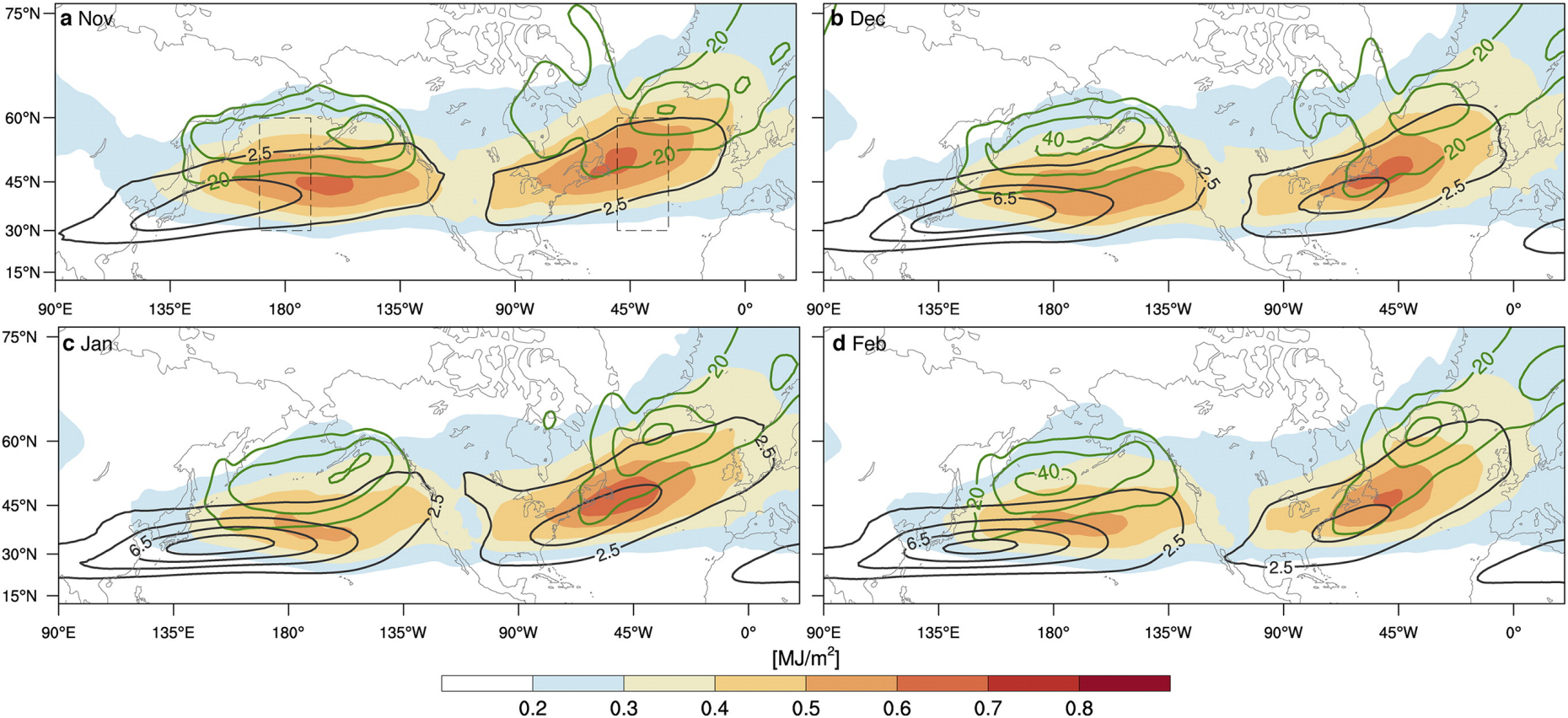Storm track dynamics
Extratropical cyclones propagate in prefered latitudinal bands known as storm tracks. Current research in the group focuses on the seasonal cycle of the storm-track intensity in present and future climates.

In a newly funded external pageSNSF projectcall_made (2022–2025) we will conduct a systematic assessment of several processes underlying changes in the growth of extratropical cyclones in a warmer climate: the baroclinic contribution and its efficiency, the barotropic contribution and also the role of diabatic processes. The latter contains also air-sea interactions, the role of sea surface temperature fronts and ocean eddies in determining future trends in the intensity of storm tracks. In this study, a fully coupled 40-member CESM2.0 ensemble of present-day and future climate simulations with varying grid-spacing is analyzed using eddy energy diagnostic in combination with feature-based cyclone and trough-ridge identifications. Further, storm tracks in idealized high-resolution aquaplanet simulation using ICON are explored. This combination will allow for studying the eddy total energy budget from both, Eulerian and Lagrangian viewpoints.
News
- Alejandro Hermoso presented his results on recent jet trends over the North Atlantic at the external pageEMS Annual Meeting 2022call_made in Bonn, Germany (external pageEMS2022-40call_made).
Toward Eliminating the Decades-Old “Too Zonal and Too Equatorward” Storm-Track Bias in Climate Models
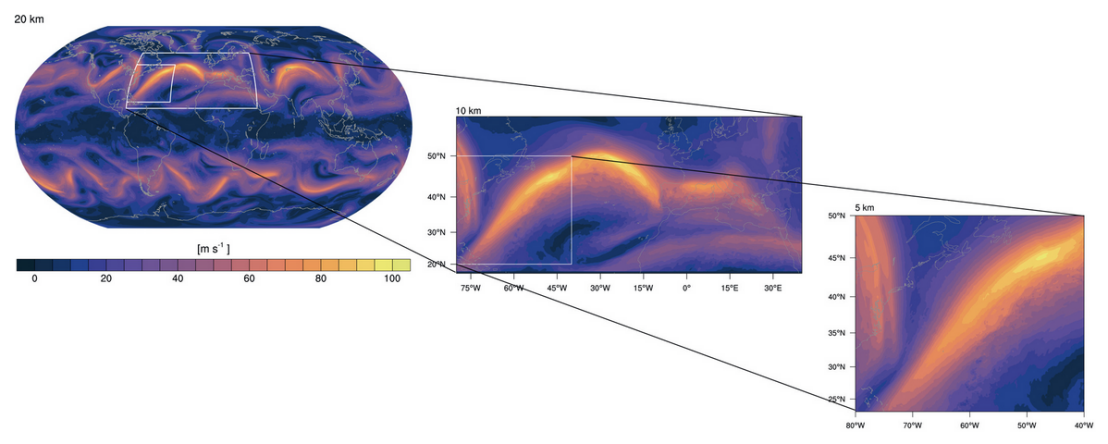
Much of the daily weather variability is determined by the propagation of extratropical low pressure systems. The direction of propagation of these systems dictates regional precipitation patterns, and an accurate representation of the track is important to reduce uncertainties in future projections. However, climate models simulate tracks that are too zonal (i.e., east–west), too close to the equator and too weak. Using an idealized simulation, this study explores the hypothesis that all three biases are interrealted and that underrresolved diabatic processes are their combined cause. Indeed, the 10-yr kilometer-scale idealized simulations shows that individual tracks propagate more poleward, intensification rates will increase and the tracks become less zonal at storm-resolving model resolution, helping to reduce this well-known circulation bias in climate models.
external pageEOS Editor Highlightcall_made
Publication
Storm track response to uniform global warming downstream of an idealized sea surface temperature front
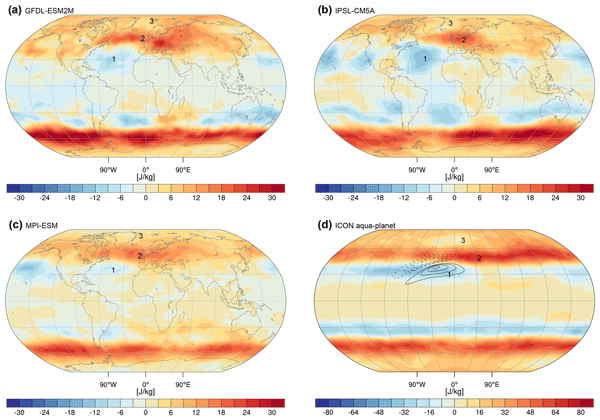
The future evolution of storm tracks, their intensity, shape, and location, is an important driver of regional precipitation changes, cyclone-associated weather extremes, and regional climate patterns. For the North Atlantic storm track, Coupled Model Intercomparison Project (CMIP) data indicate a tripole pattern of change under the RCP8.5 scenario. In this study, the tripole pattern is qualitatively reproduced by simulating the change of a storm track generated downstream of an idealized sea surface temperature (SST) front under uniform warming on an aquaplanet
Publication:
The midwinter suppression of the North Pacific storm track and the baroclinic conversion efficiency
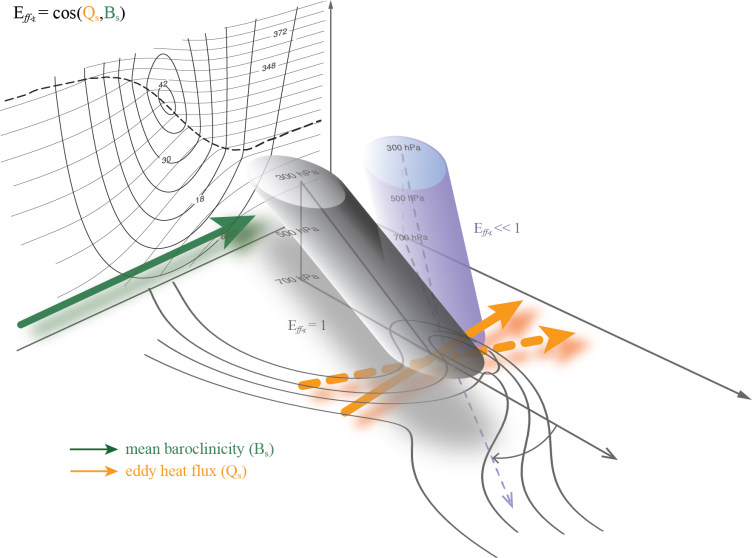
In contrast to the North Atlantic storm-track intensity, the North Pacific storm-track intensity is reduced during midwinter compared to late autumn and early spring. The midwinter suppression is an interesting phenomena because it appears to challenge the link between the seasonal cycles of the mean background baroclinicity and the mean eddy intensity. We aim to contribute to a better understanding of the seasonal cycles of the North Atlantic and North Pacific storm track by (a) developing novel diagnostics, such as the efficiency of the baroclinic conversion processes, (b) modelling using idealized simulations and (c) illuminating the growth of eddies using Lagrangian and feature-based diagnostics.
Publications
- external pageThe storm-track suppression over the western North Pacific from a cyclone life-cycle perspective. [Schemm, S., H. Wernli and H. Binder] Weather and Climate Dynamics. (2020)call_made
- external pageOn the Efficiency of Baroclinic Eddy Growth and How it Reduces the North Pacific Storm-Track Intensity in Midwinter. [Schemm, S. and G. Rivière] Journal of Climate. (2019)call_made
- external pageEddy Lifetime, Number, and Diffusivity and the Suppression of Eddy Kinetic Energy in Midwinter. [Schemm, S. and T. Schneider] Journal of Climate. (2018)call_made
The life cycle of upper-level troughs and ridges
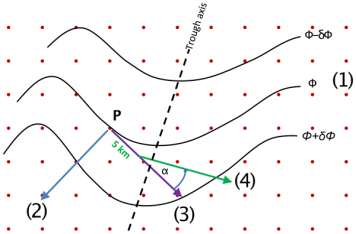
A novel method is introduced to identify and track the life cycle of upper-level troughs and ridges. The aim is to close the existing gap between methods that detect the initiation phase of upper-level Rossby wave development and methods that detect Rossby wave breaking and decaying waves. The presented method quantifies the horizontal trough and ridge orientation and identifies the corresponding trough and ridge axes. These allow us to study the dynamics of pre- and post-trough–ridge regions separately. The method is based on the curvature of the geopotential height at a given isobaric surface and is computationally efficient. Spatiotemporal tracking allows us to quantify the maturity of troughs and ridges and could also be used to study the temporal evolution of the trough or ridge orientation.
Publications

